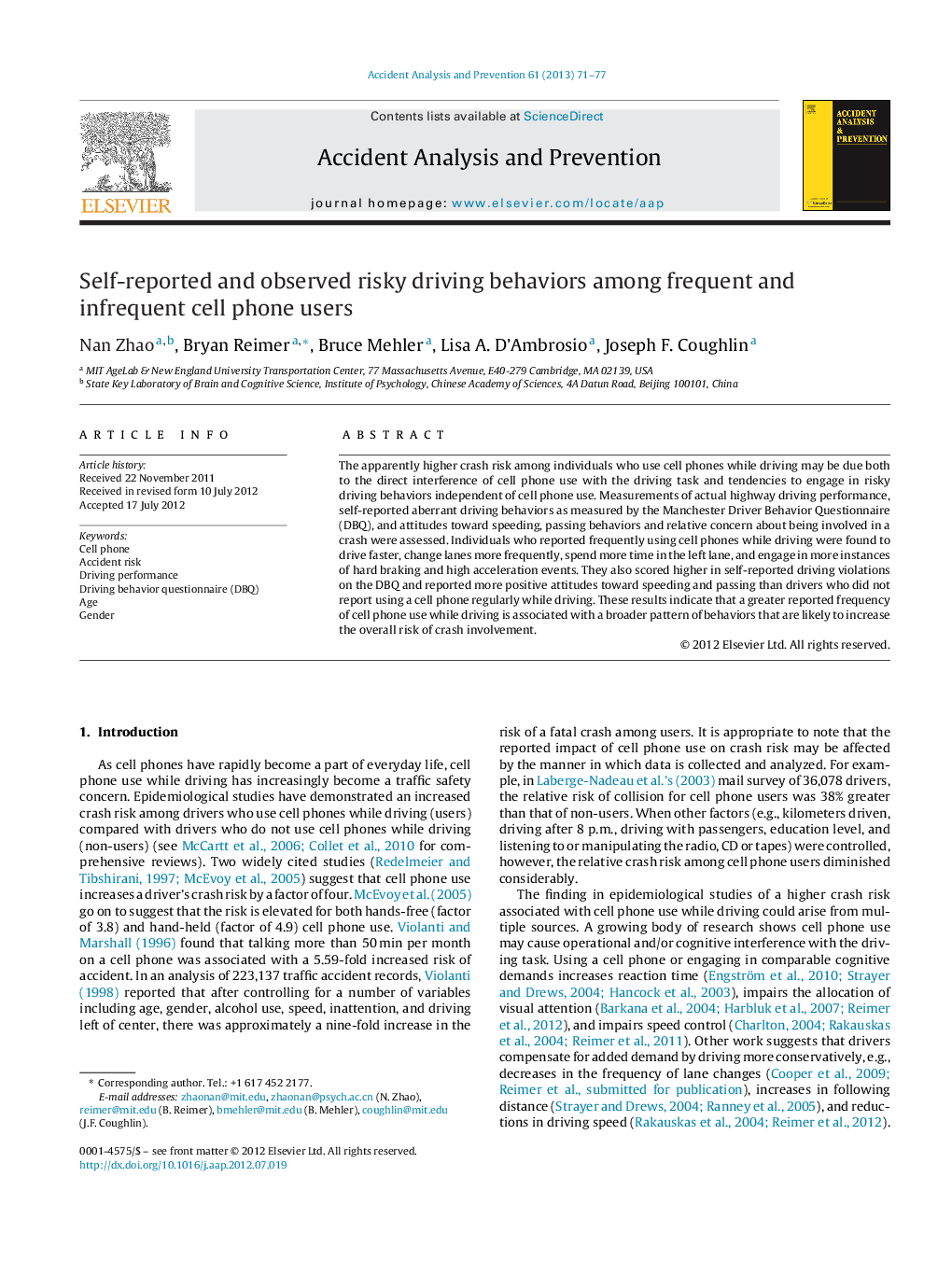| کد مقاله | کد نشریه | سال انتشار | مقاله انگلیسی | نسخه تمام متن |
|---|---|---|---|---|
| 572459 | 1452936 | 2013 | 7 صفحه PDF | دانلود رایگان |

The apparently higher crash risk among individuals who use cell phones while driving may be due both to the direct interference of cell phone use with the driving task and tendencies to engage in risky driving behaviors independent of cell phone use. Measurements of actual highway driving performance, self-reported aberrant driving behaviors as measured by the Manchester Driver Behavior Questionnaire (DBQ), and attitudes toward speeding, passing behaviors and relative concern about being involved in a crash were assessed. Individuals who reported frequently using cell phones while driving were found to drive faster, change lanes more frequently, spend more time in the left lane, and engage in more instances of hard braking and high acceleration events. They also scored higher in self-reported driving violations on the DBQ and reported more positive attitudes toward speeding and passing than drivers who did not report using a cell phone regularly while driving. These results indicate that a greater reported frequency of cell phone use while driving is associated with a broader pattern of behaviors that are likely to increase the overall risk of crash involvement.
► Drivers were grouped based on self-reported frequent vs. infrequent cell phone use while driving and compared on actual on road driving and self-reported driving behavior.
► Self-reported frequent cell phone use while driving was associated with more risky driving behavior during on-road assessments that did not include a cell phone task.
► Frequency of cell phone use appears to be related to broader behavioral and personality traits that need to be considered when developing distraction mitigation strategies.
Journal: Accident Analysis & Prevention - Volume 61, December 2013, Pages 71–77